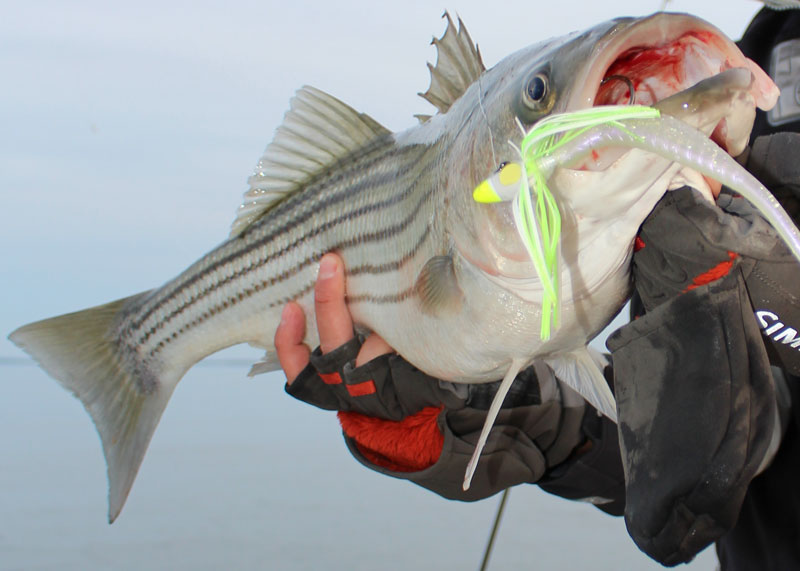2024 Update: In a review of news articles on FishTalkMag.com we decided to eliminate many old, dated posts. We also decided to keep those regarding arguements over changes to fisheries regulations. They provide an interesting history and show the (often rediculous) chain of events that leads to the regulations we currently fish under. For those who care to gain a historical perspective, this will be interesting... if well out of date.
What did we really learn from today’s (4/30-2019) Atlantic States Marine Fisheries Commission (ASFMC) meeting, regarding future striped bass regulations? That we anglers will be on pins and needles for a while longer. The Striped Bass Management Board did pass a motion (unanimously) to take action regarding the fishery, and it did mention a few specific options to include. However, now begins yet another process of public comments and meetings (plus the Facebook nuclear holocausts that are sure to ensue) before each state’s laws are laid down. Here’s the exact wording of today’s motion:
Move to initiate an addendum to address the overfishing status of striped bass and implement measures to reduce F back to the F target. Task PDT to develop options that would reduce F to the target would include:
- Minimum fish size for coast and a minimum fish size for Chesapeake Bay. (Update: done).
- Slot limit that would prohibit harvest of fish over 40 inches. (Update: done, coastwide).
- Mandatory use of circle hooks when fishing with bait coastwide to reduce discard mortality. (Update: done by some localities, but not coastwide).
- A provision that states could use seasonal closures in conservation equivalency proposals. (Update: done initially but since then the use of conservation equivalency has been restricted due to abuse by some states).
- Apply needed reductions equally to both commercial and recreational sectors. (Update: Not by a longshot!).
- Apply needed reductions proportionally based on total removals in 2017 to both commercial and recreational sectors. (Update: there's too much arguement over what is "needed" to make any asessment on this one).

Remember: these are merely options to be considered, not any actual rule changes as of yet. The idea here is to come up with changes that can be applied to the 2020 season (though one might infer from the wording that we’re in for a minimum size change in the Bay, particularly since the Chesapeake was specifically named in that line). It should be noted that according to the Striped Bass Technical Committee, a 17-percent reduction from the 2017 take could be accomplished with a 21-inch minimum schoolie season in Maryland and a 22-inch minimum in Virginia waters. (Note that spring trophy striped bass season in Virginia is already officially off). Update: it is in Maryland, too, as of the 2024 season. That does not (yet) mean we will move to this minimum size in the Bay; the take could also be reduced by shortening the season, temporarily closing the season when water temperature hits a certain level (and release mortality soars), or any number of restrictions and combinations of restrictions.
As a point of reference for how this works, remember that Maryland managed to get the minimum size reduced from 20-inches to 19 with mandatory circle hooks, the idea being that since circle hooks result in fewer released fish dying, the overall “take” of stripers being removed from the ecosystem would hold steady or go down.
We at FishTalk are all for reducing mortality and triggering a resurgence in striper numbers, but we do want to point out that the nine-percent overall catch-and-release mortality rate used by the ASMFC to calculate how many fish recreational anglers “take” (kill, regardless of whether they’re harvested or not) is not legitimate. The cited study which resulted in this catch-and-release carnage estimate, Diodati and Richards (1996), was performed in a saltwater pond and specifically states that it should not be used to calculate release mortality coastwide. (Click on the link, scroll to the last paragraph, and look 18 lines down).
The bottom line? The science we’re working with here is unreliable at best and not even remotely plausible, at worst. The one thing everyone agrees on is that we don’t want to see a return to the uber-low striper populations of the 80s. Even after today’s meeting, we still don’t know how we’ll prevent this and we don’t know what new regs will hit for 2020. But we do know one thing: releasing trophy-sized breeders this spring will have a positive effect, nine-percent release mortality estimate be damned. Once again, we suggest that everyone trolling the Bay for spring trophies consider a voluntary “one-and-done” policy. Take home just one big fish this spring for your dinner table, and wait for schoolies to come in before filling the cooler. Just as importantly, when these public input meetings start taking place show up and voice your opinion as a recreational angler. You can bet the last rockfish that other stakeholders will be there, using the nine-percent figure to claim that we recs are killing half the fish in the “take” by catch and release fishing.
Editor's note: This article was originally published in April of 2019 and was updated in May of 2024.